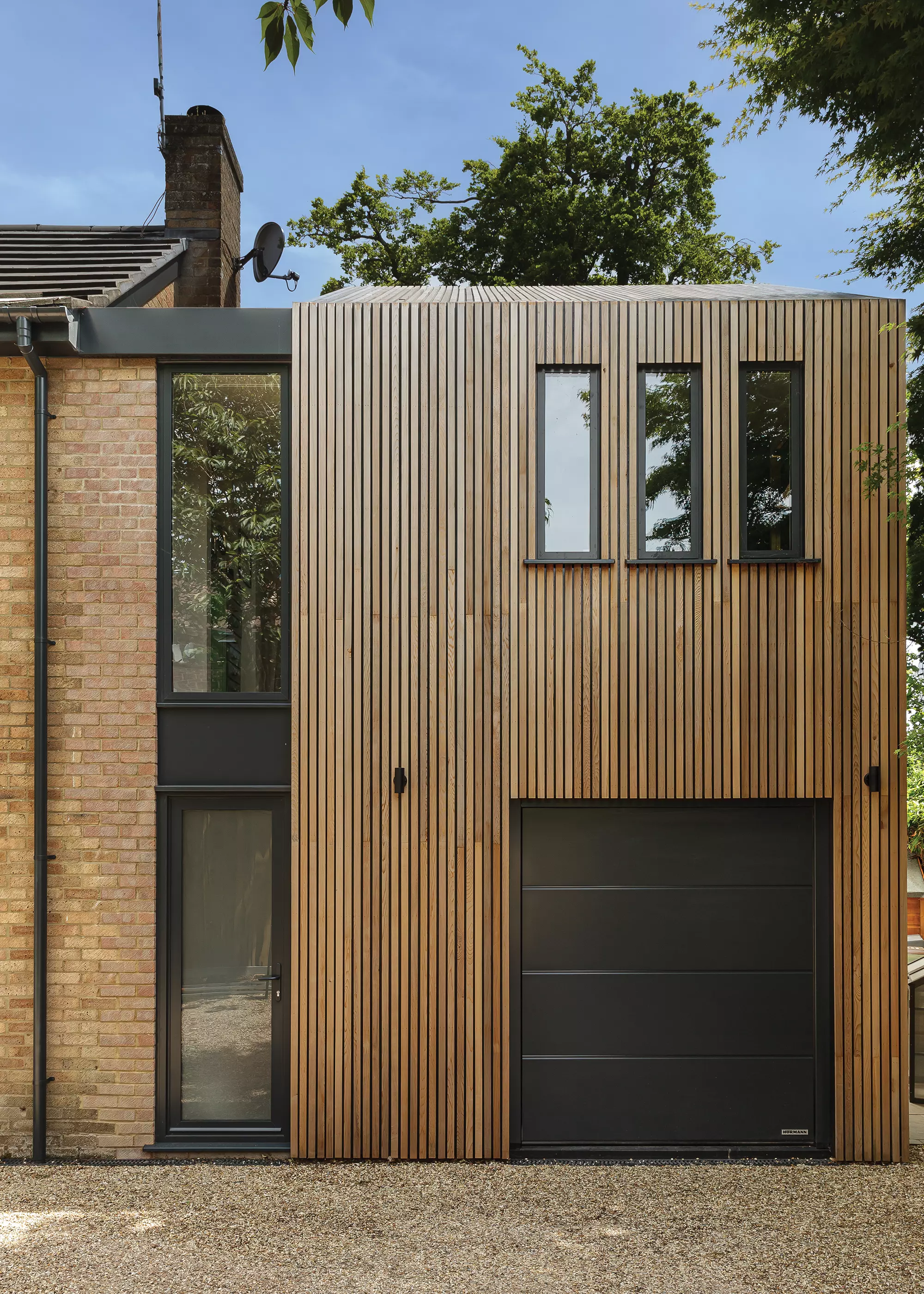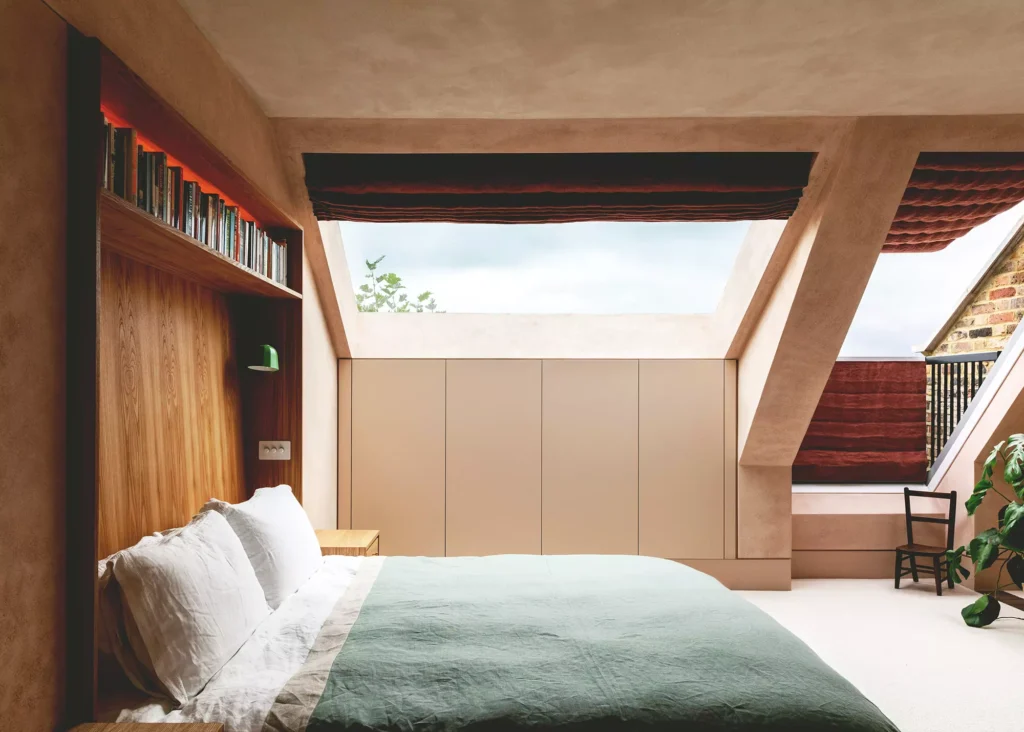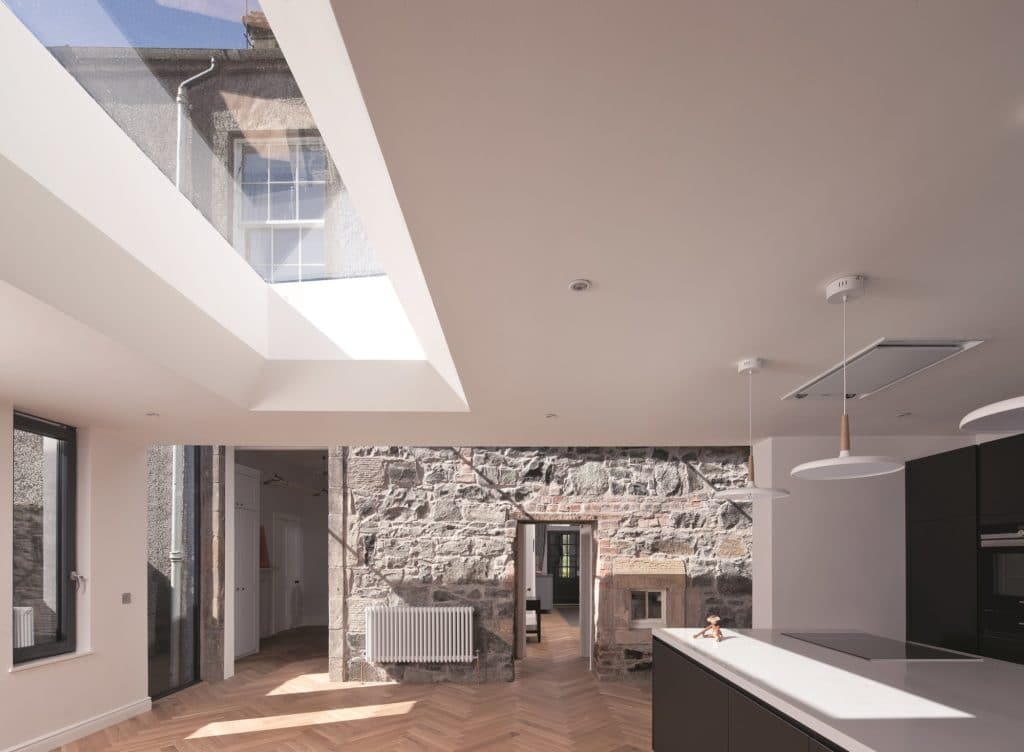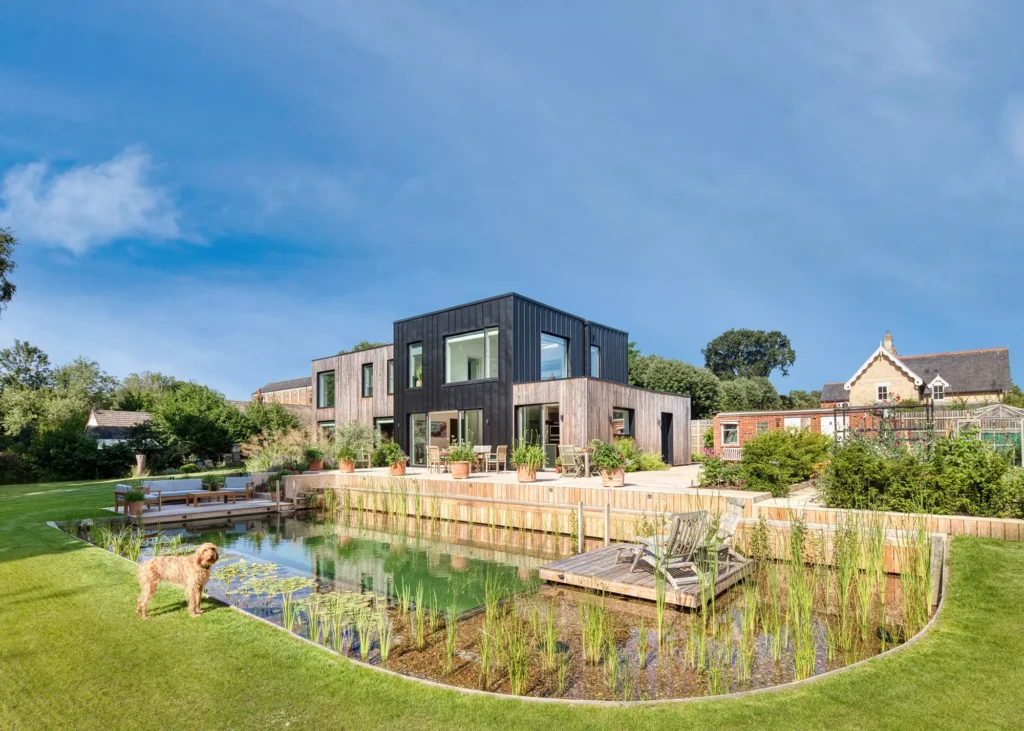
9th & 10th September, Westpoint Arena, Exeter. 100s of suppliers, seminars, expert advice. Explore all the options, all in one place – only at Build It Live.
Book your free tickets now
9th & 10th September, Westpoint Arena, Exeter. 100s of suppliers, seminars, expert advice. Explore all the options, all in one place – only at Build It Live.
Book your free tickets nowFor those of you looking to refurbish an existing building, it might come as a pleasant surprise to discover just how much you can achieve without having to go through the planning approval process.
The permitted development (PD) regime allows you to embark on a whole host of home improvements, from extensions through to adding solar panels or other renewable technologies.
The crux of permitted development rights is that the government has granted blanket consent for a range of works, provided they meet certain criteria and that the local authority accepts your scheme adheres to them. This is a complex area of planning regulation, taking in numerous classes of development – each with its own detailed rules.
In this article we’ll principally be focusing on the English PD scheme, but Scotland, Wales and Northern Ireland all administer their own versions.
They each follow the same basic principles but have subtle differences, so check the guidance that applies to your part of the country via the relevant government website.
Reconfiguring rooms is a quick and easy way to update a space, and you won’t need permission for internal changes such as moving walls, adjusting floor heights, rejigging a kitchen or creating a new bathroom.
This only applies to a completed and occupied house, however; not to a new-build or conversion under construction, where the approved plans must be followed. Bear in mind that you may need listed building consent if your home carries this status.
Read More: Hiring an Interior Designer for Your Project
CASE STUDY Elegant Renovation of a Victorian CottageMartin and Julie Smart felt isolated in their rural home and wanted to move back to a village for the feeling of community. The couple managed to find the perfect property in a prime location and began working on their renovation plans. It consisted of an 18th-century core with later alterations and additions – including a 1970s single-storey bathroom extension tacked on to the rear. The complete project took the couple 12 months from start to finish, costing them a total of £295,200. This involved the addition of a new extension to the rear, containing an open-plan kitchen-living-dining room, with the ensuite main bedroom above. To the side is a single-storey entrance hall with a glass roof and oak front door. |
You can build storey-height additions to the back and sides of your house under PD rights. Generally the limits for rear extensions are that you can stretch 4m out from the original dwelling on detached homes, and 3m in other cases.
Larger versions up to 8m and 6m respectively are currently allowable in England, subject to a notification procedure. Side expansions can be up to half the width of the original building.
You will be restricted in terms of ridge height (4m) and the amount of garden amenity you can cover (no more than 50%) if you want to qualify for PD.
Proximity to plot boundaries also has an impact, while the materials must match the existing house as far as practicable.
Read More: Extending a Home Under Permitted Development: What Can I Build?
3. Build a Conservatory Without Planning PermissionFor planning permission purposes, these glazed rooms are treated as extensions – with the main difference being that the requirement for matching materials doesn’t apply. To qualify as permitted development, your conservatory must attach to the original dwelling and not a subsequent extension. More Ideas: Conservatory Design Ideas: Inspiring Projects and Expert Advice |
Two-storey rear additions are permitted development provided they don’t extend out by more than 3m and they are located less than 7m from the rear boundary.
If the side of the extension is within 2m of the flank boundary, then the eaves can’t be more than 3m high.

Ed and Nicola knew they wanted to retain their home’s original brickwork but were also keen to create a crisp and contemporary finish to the extension. To achieve this, architect Lesley Hally chose to incorporate a mix of render, grey zinc cladding and slim cedar cladding, to complement and contrast the yellowish bricks and create a modern timber clad extension. Photo: Simon Maxwell
5. Repair, Replace or Add WindowsYou won’t need consent for this kind of alteration provided that, as a result of the change, the appearance of the house isn’t materially altered (so some change is permissible). You can even enlarge existing fenestration under PD – although take note that bay windows are considered to be extensions. Special rules intended to protect neighbours’ privacy apply to side windows, which should be fitted with obscured glazing. It’s quite common to see conditions on previous planning permission preventing alterations to windows in houses and conversions – so always check this before proceeding. Read More: Should You Repair or Replace the Windows? |
Transforming an attic into a habitable zone can be a cost-effective route to more space. This kind of project tends to largely rest on internal work, so there’s usually no need for planning permission.
You can expand available space either with dormer windows or similar alterations, such as changing a hipped roof to a gable – subject to the proviso that the works don’t extend beyond the plane of the existing slope on the front elevation.

Studio Hagen Hall has applied its eye for spatial planning to this compact terraced home in an urban city location, adding a contemporary loft conversion. Photo: Mariell Lind Hansen
Volume limits apply, too: you can add up to 40m3 to terraced houses; or up to 50m3 to detached properties and semis.
Read More: Complete Guide to Loft Conversion Projects
Need more advice about eco projects?Build It’s Self Build Virtual Training will give you the detailed know-how to successfully realise your dream home. Our interactive courses are presented by Build It’s expert contributors and designed to give you the key nuggets of knowledge you need – all from the comfort of your own home. Our courses take place online and allow for audience participation and experience sharing. Use the code TWENTY for 20% off. |
7. Replace Your RoofYou won’t need formal consent to change the roof finish – including jobs such as repairing sections of the covering or replacing it with the same or another material. Any alterations must project no more than 150mm from the existing plane, which is just enough room to add a layer of external insulation if you choose to take this route for an attic conversion. More comprehensive changes to the roof shape are covered above. Read More: Choosing Roof Tiles for Renovation Projects Situated in the Ferryhill area of Aberdeen, this traditional Scottish home – renovated by Brown & Brown architects – is topped with a stylish slate roof |
Fitting roof windows can offer a fantastic opportunity to filtering in top-down natural light. Rooflights are generally permitted development, but mustn’t stick out by more than 150mm from the plane of the roof.

This single-storey extension has been constructed with structural insulated panels (SIPs) for maximum efficiency and utilises a large rooflight stretching across the ceiling to illuminate the home’s charming stone wall and bring as much light in as possible
9. Add a Porch to Your HomeYou can update any external door to your home by adding a small porch, up to 3m high and 3m2 in floor area (measured externally). It must be at least 2m away from any boundary with a highway. |
You’re allowed to paint, repair or replace the external cladding of your house, but the new finish must broadly match the original in appearance.
There are strong restrictions in place to protect designated zones. So in conservation areas, national parks, areas of outstanding natural beauty (AONBs) and the Broads you will need to apply for planning permission to clad in stone, artificial stone, pebbledash, render, timber, plastic or tiles.
Find Cladding for Your Project: Explore our Building Materials Products Directory

Theis and Khan architects revived a collection of outbuildings ancillary to a grade II listed farmhouse, positioned in an area of outstanding natural beauty. Stylish and durable oak cladding helps to ensure the converted home retains an authentic character. Photo: Nick Kane
11. Upgrade Your InsulationUnless a layer of thermal protection is being applied to the building’s exterior in a way that would affect its appearance, then fitting insulation is classed as internal work that doesn’t require permission. Where you’re adding it as part of an external cladding, such as insulated render, it will still count as PD unless it increases the height of the building or moves the front wall closer to the highway. |
The government’s bid to reduce carbon emissions means that homeowners are now free to add solar thermal or photovoltaic (PV) panels on roofs or walls, provided the units don’t protrude more than 200mm beyond the roof plane and are installed below the highest part of the covering.
The general rule is that these renewables should be sited to minimise visual impact on the dwelling and the locale – and there are specific restrictions in place for conservation areas, world heritage sites and listed buildings. Panels can also be installed on outbuildings or in your garden, but there are strict size limitations for the latter.
Learn More: Focus On: Installing Solar Panels
13. Install a Heat PumpYou can fit a ground or water source heat pump in your garden as permitted development. The only potential snag may be local rules for listed buildings and conservation areas. There are strict size and location limits for air source versions – and only your first installation is allowed under PD. Read More: Why Choose a Heat Pump? |
Currently, adding an underground living space falls into the extension category. However, in some urban areas – especially those where so-called mega basements are popular – councils are removing permitted development rights via Article 4 Directions (see the extensions & provisos box, overleaf, for more on this).
The status of these additions is under review and a special permitted development class to cover them has been suggested, but not yet adopted.
Read More: Basement Extensions Design
15. Underpin a HouseThis type of maintenance on foundations – which is usually designed to stabilise a structure – won’t normally require planning permission, although a formal application could be necessary when underpinning a listed building or a property in a designated area. |
Erecting new single-storey structures – including summerhouses, garages and sheds – is allowed under PD provided their use is incidental to that of the main dwelling (eg for a gym rather than an extra bedroom).
The building must be behind the principal elevation of the house, and you cannot cover more than 50% of the garden with such structures. Height limits also apply.
There are no PD rights for outbuildings in the grounds of listed properties, while in AONBs, conservation areas and national parks, they must not be larger than 10m2 if they are more than 20m from the house – among other restrictions.
Read More: Garden Offices: Your Complete Guide to Building an Office in Your Garden

ByOthers Studio designed this 30m2 timber frame garden office, which sits atop a timber floor structure and ground screw foundations. The stylish project features a glass pivot door and Corten steel cladding for a unique finish, with sheepswool insulation to maintain a comfortable interior throughout the seasons. Photo: Lorenzo Zandri
17. Convert a GaragePlanning permission is not normally required to repurpose a garage for residential use, providing that the work is exclusively internal and does not involve enlarging the building in any way (including the addition of dormers in the roof). Check with your local authority that the right to convert has not been removed. This is a particularly common issue with new developments and conservation areas. This stunning scheme is a garage conversion from Cue and Co London that offers this home the space it needed for a light and airy kitchen. Read More: Beginner’s Guide to Garage Conversions |
Free Advice about your ProjectTalk to the experts about your project and learn from their years of experience at Build It Live. Watch live presentations on a variety of topics, meet hundreds of suppliers and book a one-to-one appointment with an expert – including architects, project managers and finance specialists. Build It Live takes place three times a year in Kent, Oxfordshire and Exeter. The next show will be on 9th and 10th September 2023, in Exeter. Claim a pair of free tickets today and start planning your visit. |
Swimming pools come under the same class as outbuildings, so if you’re planning one in a small garden you should check whether it will fall within the 50% limit on coverage of grounds by buildings.

This retractable polycarbonate model by Starlight Pools looks luxurious, and also allows all-season swimming and UV protection
19. Install New DeckingAn external deck can be laid provided it isn’t over 300mm above ground level. It’s subject to the same provisos about garden coverage (so counts towards the 50% threshold) and floorplan size in protected areas as apply to outbuildings. |
You can build new boundary treatments provided they fall within allotted height restrictions. Those fronting a highway must be a maximum of 1m tall, while a 2m threshold applies elsewhere. This right does not extend to listed buildings.
21. Upgrade Your Patios & DrivewaysLaying or replacing hardstanding is considered permitted development across most parts of a property’s grounds. However, if you’re planning to treat more than 5m2 of front garden you must either use a porous surface, such as gravel or permeable block paving. Alternatively, you should direct the rainwater to a lawn or flower bed where it can drain naturally. Read More: Driveway Design & Materials |
While most garden work is clearly permitted, including major changes such as planting hedges, there are a number of restrictions. The most significant is that many trees are protected by preservation orders, so you may need the council’s consent to prune or fell them.

Facit Homes designed and built this house to maximise views of the surrounding woodland. The garden was masterminded by Area Landscape
23. Change the Building’s UsePD allows you to convert a range of agricultural and commercial buildings – such as shops, offices and storage units – to domestic use. For example, in England only you can change the use of up to three farm buildings on the same tranche of land, up to a maximum combined footprint of 405m2. The rules around these projects are complex and, while full planning may not be required, separate prior approval applications do need to be made to the overseeing council. Read More: Barn Conversion Ideas |
Featured image: By doing a detailed analysis of historical maps, Francesco Pierazzi Architects demonstrated the original form of this semi-detached Victorian house as it stood before 1948. From here, they developed a design for an extension that did not require full planning consent. Photo: Gianluca Maver

Is there a forum? Would be great to chat & exchange ideas with like minded people. Theda
Hi Theda,
We have a Q&A page where you can discuss any questions you may have with our experts and other readers! Feel free to post a question or help another reader out with an answer.
Here’s the link to the page: https://www.self-build.co.uk/questions/
If you’d like to join our online community, feel free to follow us on facebook (https://www.facebook.com/BuildItMagazine/) and twitter (https://twitter.com/builditmagazine?lang=en) !
Lucy (Build It Digital Editorial Assistant)